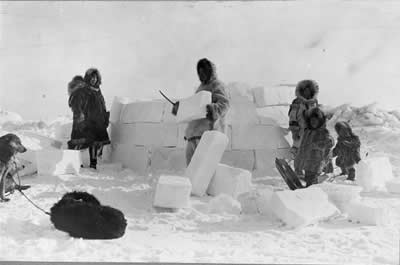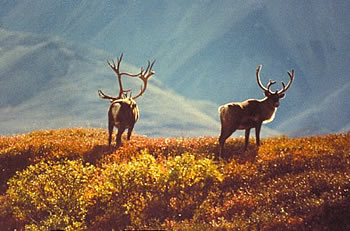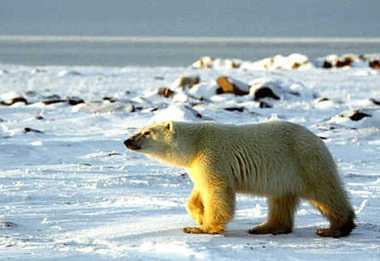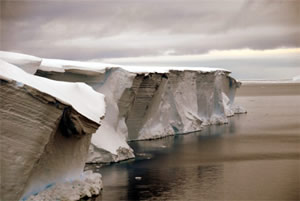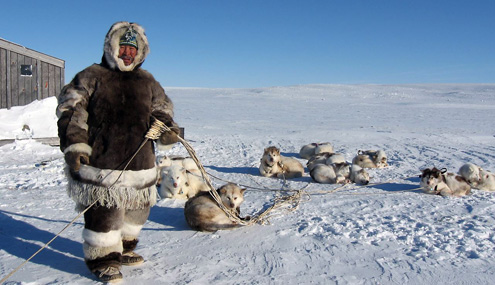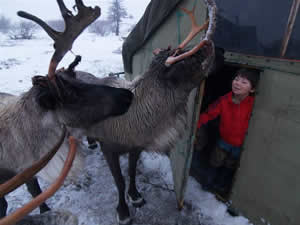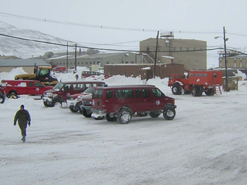Click on image for full size
Library of Congress Prints and Photographs, Photograph by Frank E. Kleinschmidt
Inuit Culture, Traditions, and History
Traditional Inuit way of life was influenced by the cold climate of the Arctic tundra. Inuit discovered ways to help them survive in this environment. Read on to learn more about traditional Inuit ways of life.
Where are the Inuit?
Inuit communities are found in the Arctic, in Canada, Alaska, and Russia. In some areas, Inuit people are called “Eskimos” however many Inuit find this term offensive. The word “Inuit” means “the people” in the Inuktitut language.
Inuit Homes
In the winter, Inuit lived in round houses made from blocks of snow called igloos. In the summer, when the snow melted, Inuit lived in tent-like huts made of animal skins stretched over a frame.
Getting Around
To travel from one place to another, Inuit used sleds pulled over the snow and ice by strong dogs. On the waters of the Arctic Ocean, small boats called “kayaks” were used for hunting while larger boats called “umiaq” transported people, dogs, and supplies.
Finding Food
Inuit fished and hunted to get their food. Whales, walruses, seals, fish were all a part of their diet.
Clothing for Staying Warm
Inuit clothing and boots were made from animal skins and fur. Large, thick coats with big hoods called “parkas” were worn as an outer layer. Today the parka style of coat is worn in other places were it is cold too.
Traditions
Inuit life has changed over the past century, but many traditions continue. Storytelling, mythology, and dancing are important parts of the culture. Family and community are very important. The Inuktitut language is still spoken in many areas of the Arctic too.
Changes to Inuit Life
Inuit a century ago lived very differently than Inuit today. Inuit used to move between summer and winter camps so that they were always living where there were animals to hunt. In winter camps they lived in igloos. In summer camps they lived in tents. That was before people who lived further south moved north and built towns in the tundra. The new towns, founded about 50 years ago, had schools and health care centers. With better health care, the Inuit population grew larger, and could not get enough food by hunting. Many Inuit from smaller camps moved into the new towns because there were jobs and food there. Eventually, by the 1960s, Inuit were required to live in town in many places.


